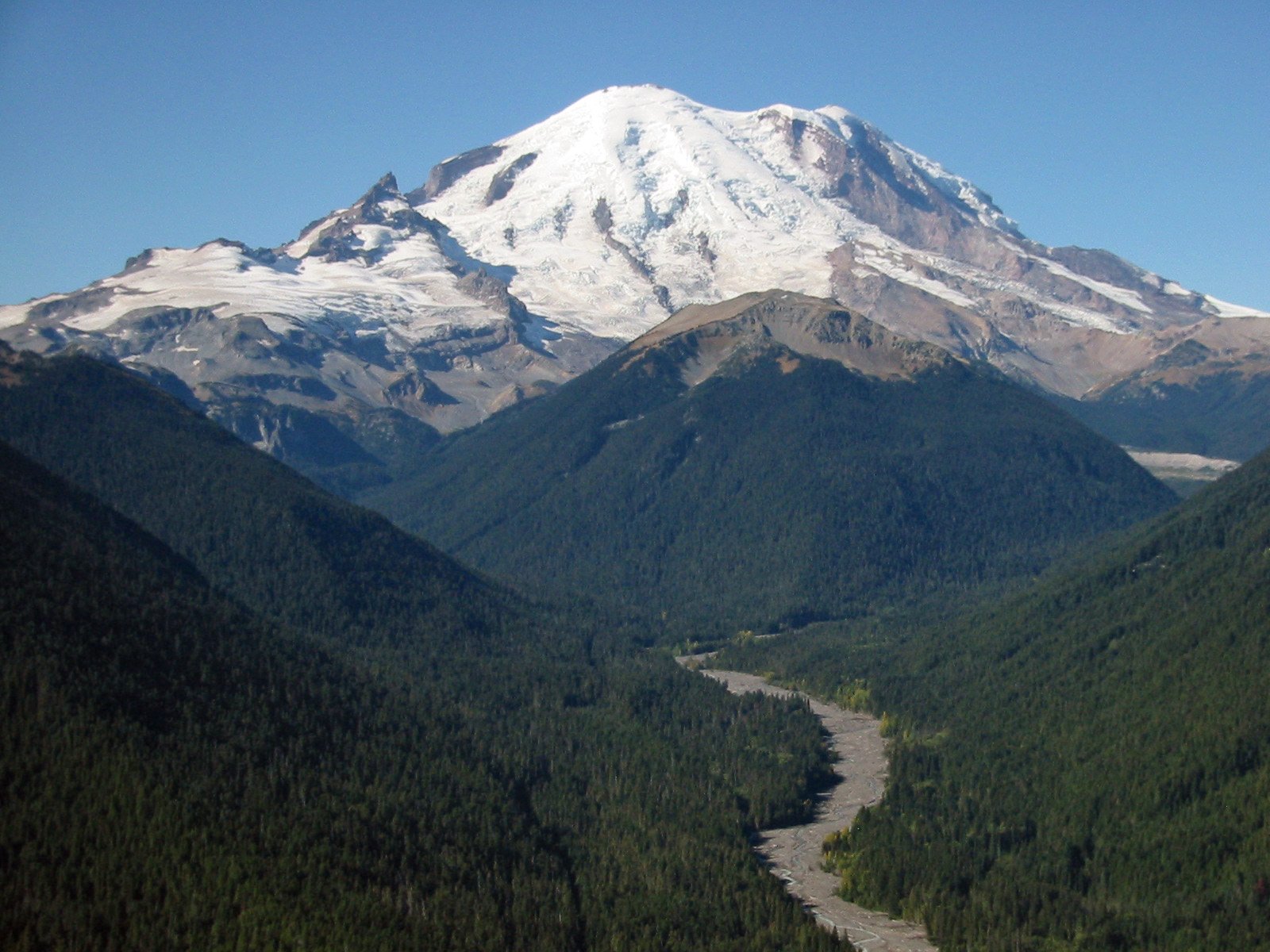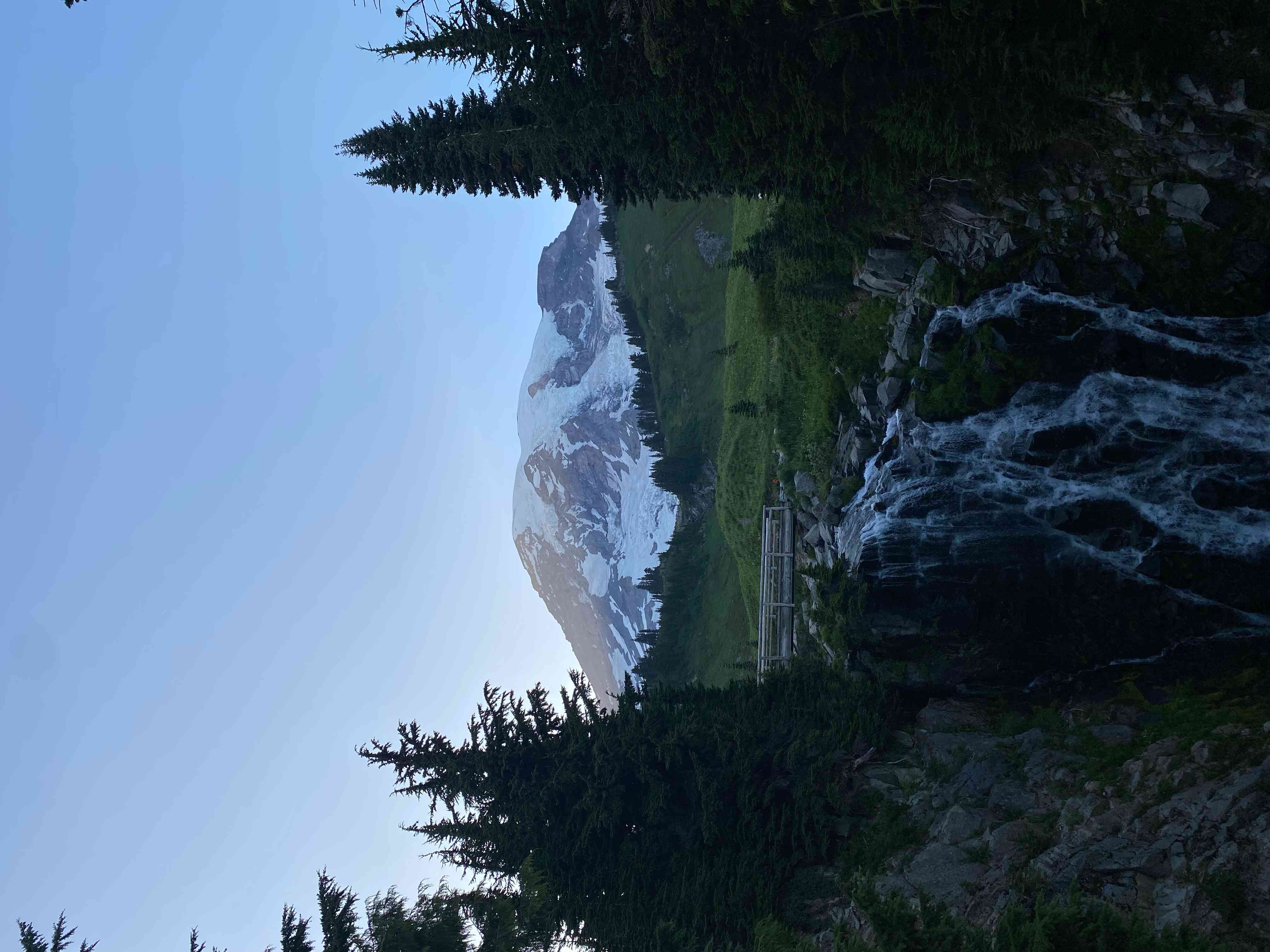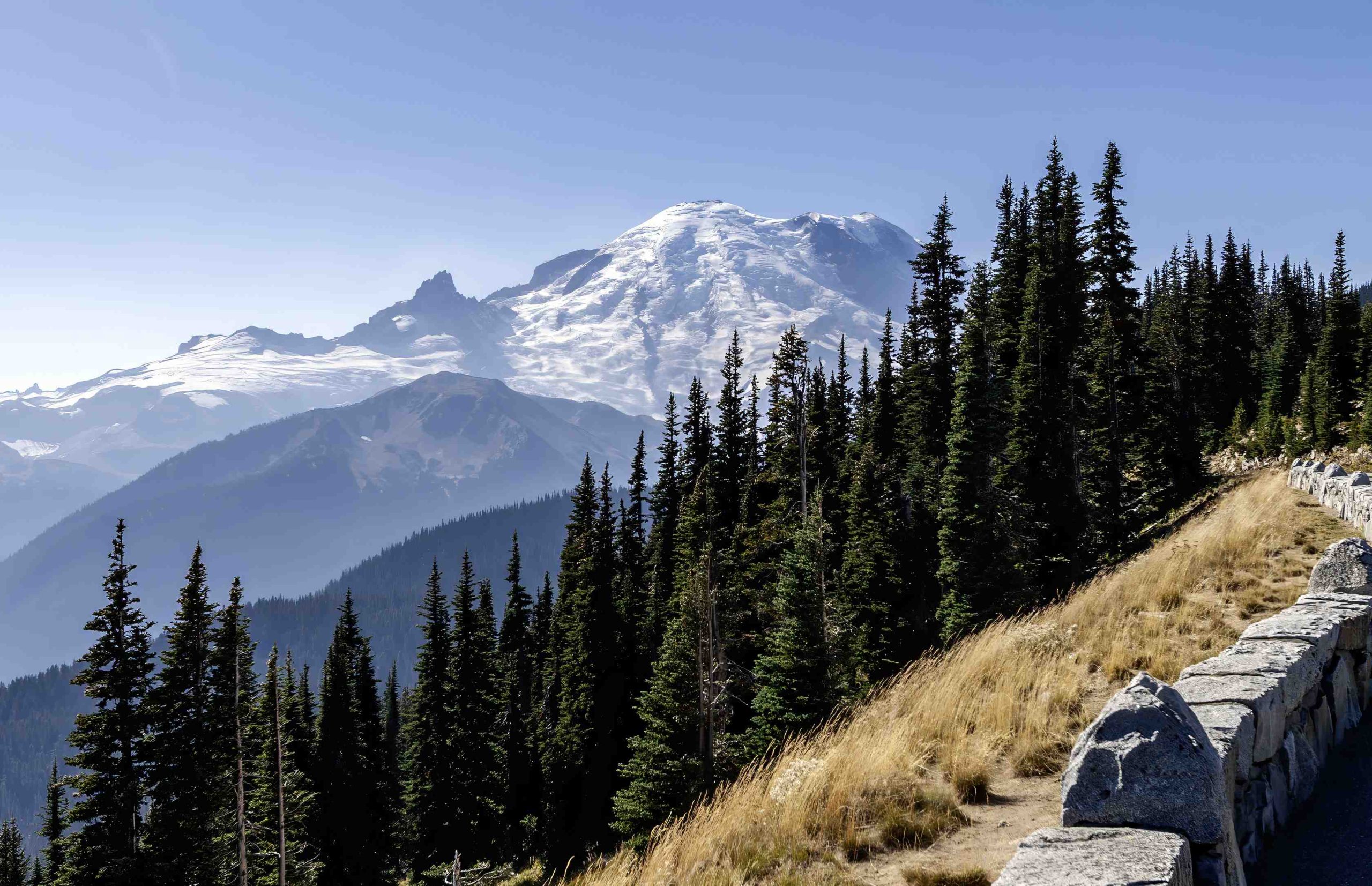The Crystal Lake Trail in Mount Rainier National Park offers a challenging yet rewarding hiking experience. This 6-mile round trip trail boasts stunning views of Mount Rainier and surrounding peaks. While it doesn’t directly connect to Paradise Point, the trail provides similar breathtaking vistas. Hikers can expect a 2,300-foot elevation gain, diverse terrain, and the possibility of seeing five volcanoes on a clear day from Crystal Peak.
What Are the Trail Specifications for Crystal Lake Rainier?

The Crystal Lake Trail is a moderate to hard hike with the following specifications:
- Length: 6 miles round trip
- Elevation Gain: 2,300 feet
- Difficulty: Moderate to Hard
- Estimated Hiking Time: 3 hours round trip
The trail begins in a shady sub-alpine forest and includes:
- Switchbacks
- Roots
- A short section on a weathered boardwalk
By late July and early August, hikers are treated to colorful subalpine wildflowers in the meadows. The trail is generally well-maintained, but hikers should be prepared for varying conditions, especially during summer when the south-facing slope can be hot and dry.
How Does the View Compare to Paradise Point?

While the Crystal Lake Trail doesn’t directly lead to Paradise Point, it offers similarly spectacular views:
- Mount Rainier: Visible from various points along the trail
- Crystal Peak: Accessible via a side trip, offering views of five volcanoes on clear days
- Surrounding Peaks: Including Mount Adams and Mount St. Helens
The best times for photography are during late July and early August when wildflowers are in bloom, and on clear days for optimal visibility.
What Camping Options Are Available Near Crystal Lake Rainier?
For those looking to extend their adventure, camping options are available:
- Lower Crystal Lake Campsite:
- Two wilderness campsites
- Each site equipped with a bear pole
-
Accessible via a 100-yard side trip from the main trail
-
Camping Regulations:
- Backcountry camping permit required
- Permits available online (fees apply)
- No restrooms or water sources (except the lake)
- Water treatment necessary before consumption
How Can Hikers Access the Crystal Lake Trail?
Accessing the Crystal Lake Trail is straightforward:
- Trailhead Location: SR 410, approximately 4 miles north of Cayuse Pass
- Parking: Available for about 20 cars along highway shoulders
- Fees: No day-use pass required, but backcountry permit needed for overnight camping
- Public Transport: Not available directly to the trailhead
- Accessibility: Trail not designed for visitors with mobility issues due to steep switchbacks and uneven terrain
What Should Hikers Know Before Attempting the Crystal Lake Trail?
Before embarking on this hike, consider the following:
- Trail Conditions:
- Steep switchbacks
- Varied terrain including roots and boardwalks
-
Hot and dry conditions possible on south-facing slopes
-
Preparation:
- Bring plenty of water
- Wear sturdy hiking boots
- Pack sunscreen and insect repellent
-
Carry a map and compass
-
Best Times to Visit:
- Late July to early August for wildflowers
-
Clear days for optimal views of surrounding peaks
-
Wildlife Awareness:
- Be bear-aware (use bear poles at campsites)
- Respect local flora and fauna
How Does the Crystal Lake Trail Compare to Other Mount Rainier Hikes?
The Crystal Lake Trail offers a unique experience compared to other Mount Rainier hikes:
| Feature | Crystal Lake Trail | Other Popular Trails |
|---|---|---|
| Length | 6 miles round trip | Varies (2-93 miles) |
| Elevation Gain | 2,300 feet | 500-9,000+ feet |
| Difficulty | Moderate to Hard | Easy to Very Strenuous |
| Crowding | Less crowded | Often more crowded |
| Views | Mount Rainier, surrounding peaks | Varies, often include Rainier |
While not as famous as the Wonderland Trail or as easily accessible as the trails at Paradise, the Crystal Lake Trail offers a challenging day hike with rewarding views and fewer crowds.
What Are the Best Photography Opportunities on the Crystal Lake Trail?
Photography enthusiasts will find plenty to capture on this trail:
- Wildflower Meadows: Best in late July and early August
- Crystal Lakes: Lower and Upper lakes offer reflective surfaces for mountain views
- Mount Rainier: Visible from various points along the trail
- Panoramic Views: From Crystal Peak (side trip)
- Forest Scenes: Sub-alpine forest sections offer intimate nature shots
For the best lighting conditions, consider:
– Early morning for soft light on Mount Rainier
– Golden hour for warm tones on the landscape
– Clear days for crisp, far-reaching views
Remember to practice Leave No Trace principles while photographing to preserve the natural beauty of the area.
While the Crystal Lake Trail doesn’t directly connect to Paradise Point, it offers a comparable experience with stunning views, challenging hiking, and diverse ecosystems. Whether you’re a day hiker or looking for a backcountry camping experience, this trail provides a quintessential Mount Rainier adventure.
References:
1. https://www.nps.gov/mora/planyourvisit/crystal-lakes.htm
2. https://www.wta.org/go-hiking/hikes/crystal-lakes

